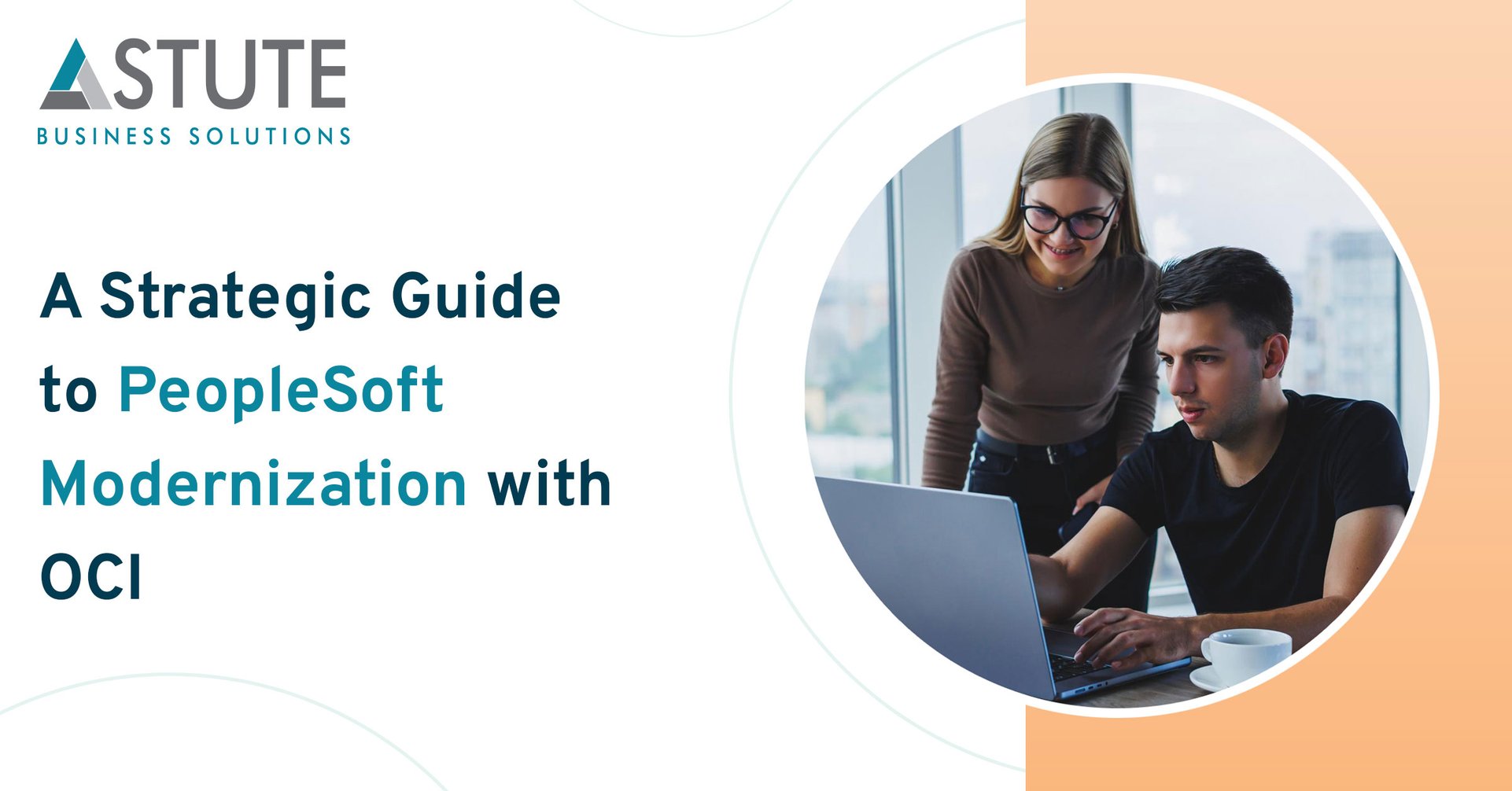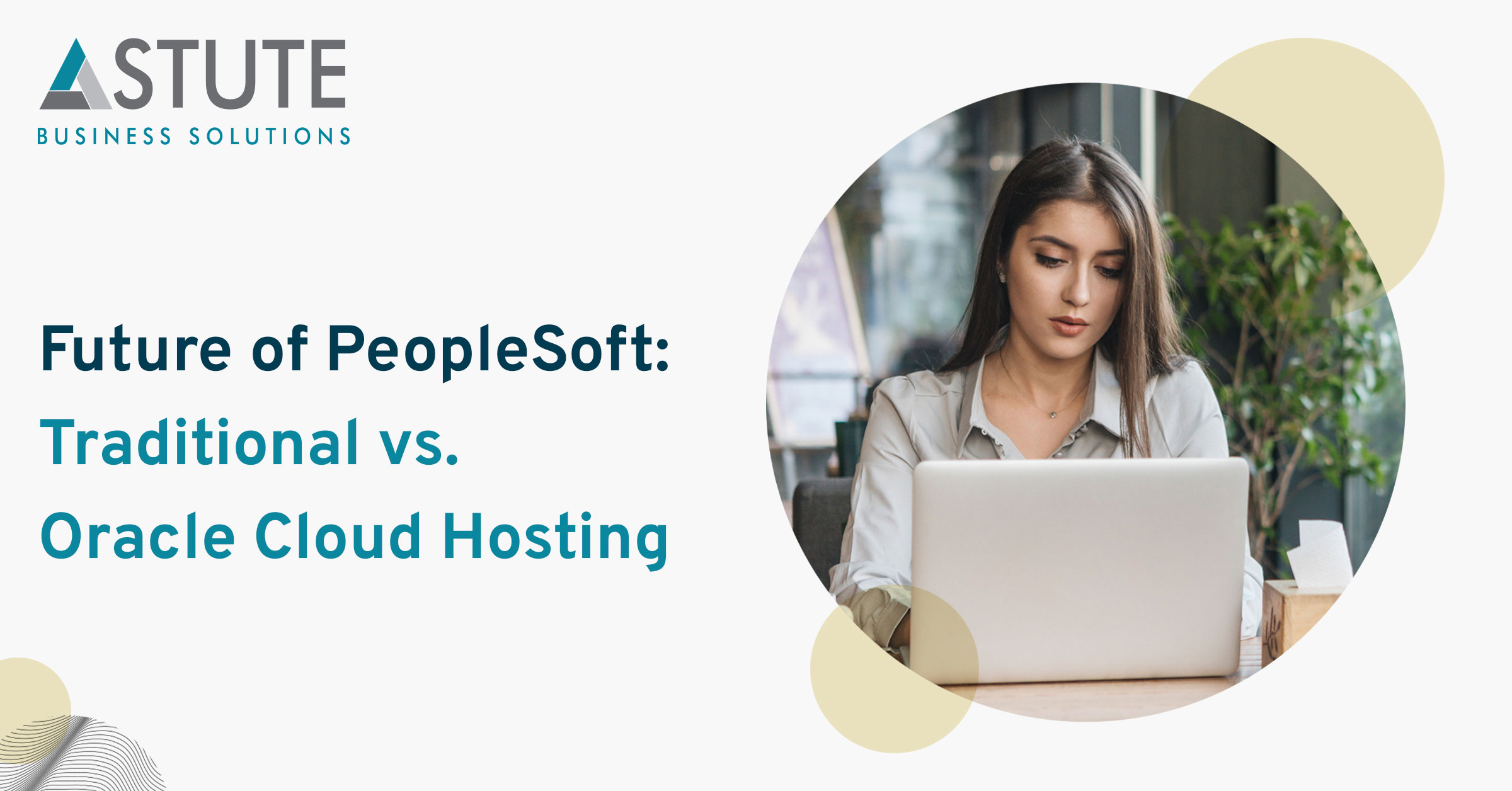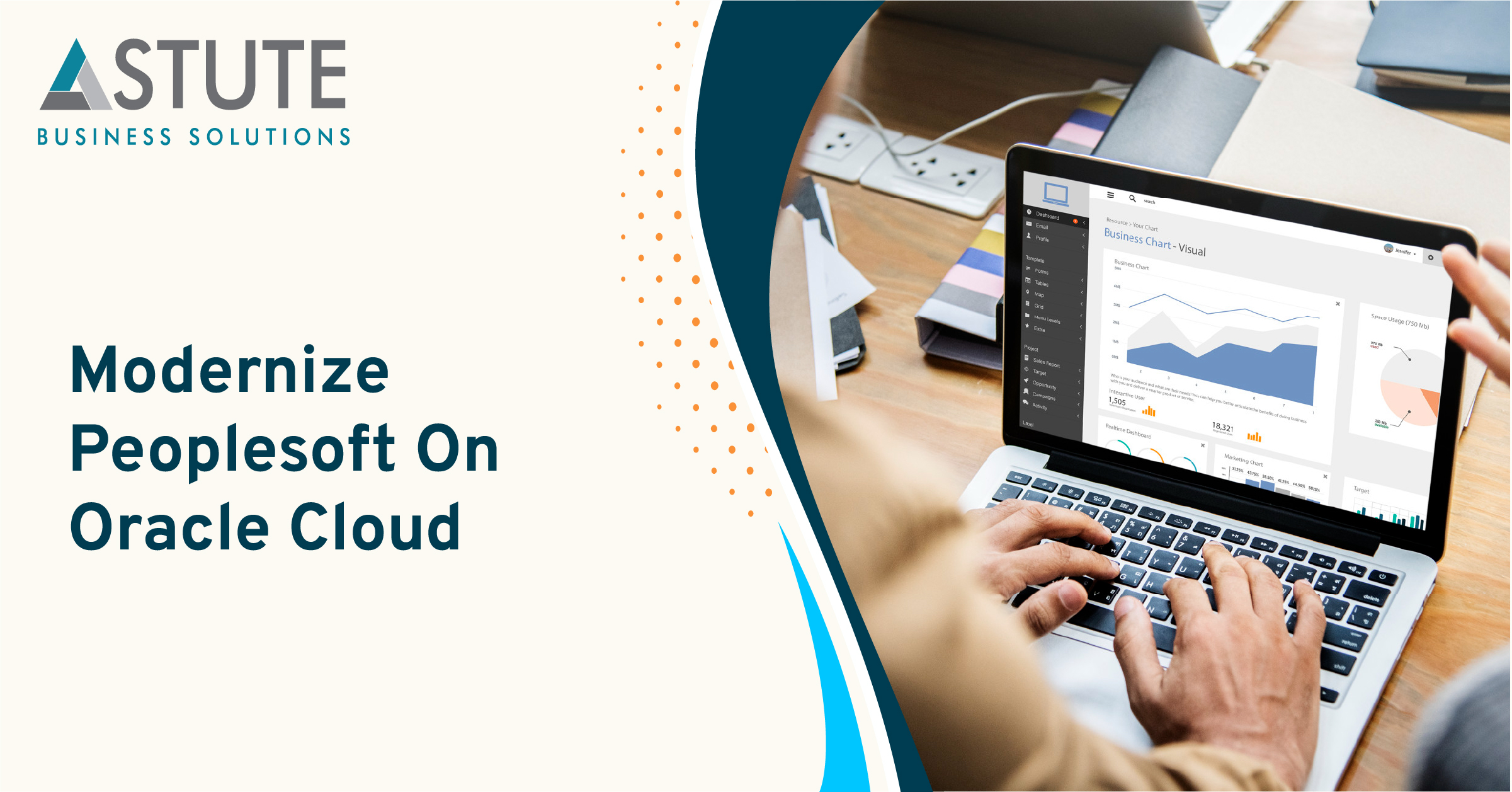A Strategic Guide to PeopleSoft Modernization with OCI

Table of Contents
Introduction:
Enterprise Resource Planning (ERP) is an ever-evolving field, and PeopleSoft has been a key player, offering comprehensive solutions in human resources, finance, and other essential business areas. As the business landscape demands more agility and innovation, modernizing these systems becomes crucial. This guide outlines the strategic shift towards cloud-based solutions, particularly focusing on Oracle Cloud Infrastructure (OCI) for PeopleSoft modernization.
1. Why OCI is Optimal for Modernizing PeopleSoft
Overview of OCI's Features:
OCI distinguishes itself as a prime platform for modernizing PeopleSoft applications, thanks to its performance, scalability, and security. It's engineered for demanding enterprise applications, offering:
- High Performance: Ideal for PeopleSoft's high-volume transactions and complex queries, ensuring efficiency and speed.
- Scalability: Easily adjusts resources, aligning with fluctuating business demands and optimizing costs.
- Enhanced Security: Provides comprehensive security measures crucial for enterprise data protection.
Integration and Compatibility:
OCI's seamless integration and native compatibility with PeopleSoft, both Oracle products, simplify the cloud migration process. Continuous improvements from Oracle ensure optimized performance, simplifying maintenance and support.
2. The Advantages of Running PeopleSoft on the Cloud
Scalability and Flexibility:
Cloud environments, particularly OCI, offer instant scalability, crucial for fluctuating demands in PeopleSoft applications.
Cost-Effectiveness:
OCI's pay-as-you-go model reduces upfront investments and maintenance costs associated with traditional on-premises setups.
Innovation and Agility:
OCI's agility enables rapid deployment and integration of cutting-edge technologies, fostering a culture of innovation.
Enhanced Security and Compliance:
OCI provides robust security features and complies with various industry standards, essential for ERP systems.
3. Agility and Configurability of PeopleSoft on OCI
Comparative Analysis:
OCI stands out for its deployment speed, customization flexibility, and dynamic scalability, offering a more agile and configurable environment for PeopleSoft compared to other cloud or on-premises solutions.
Case Studies:
- Hennepin County: Focused on online portal development and infrastructure redesign, emphasizing security and strategic project management.
- Frederick Community College: Objectives included operational efficiency and scalable IT infrastructure, providing a blueprint for educational institutions.
- TriNet: A large-scale migration that underscores OCI's scalability and efficiency for enterprise requirements.
Enhanced Performance and Integration:
OCI's architecture, optimized for Oracle applications, ensures efficient PeopleSoft performance and offers a cohesive experience with Oracle's suite.
4. OCI as a Stepping Stone to SaaS
Path to SaaS:
Migrating PeopleSoft to OCI is an intermediary step towards adopting a full SaaS model. This transition allows organizations to adapt to cloud environments, aligning with SaaS principles like scalability, managed services, and pay-as-you-go pricing.
Preparing for the Future:
Adopting OCI positions organizations to smoothly transition to SaaS solutions, aligning their processes and IT strategies with a cloud-first approach.
5. Cost and Risk Considerations in Moving to OCI
Cost-Benefit Analysis:
A detailed analysis comparing OCI with other platforms and on-premises solutions should consider direct and indirect costs, long-term financial impact, and ROI.
Risk Assessment:
Assessing data security, downtime, and vendor lock-in risks is essential. A robust risk mitigation strategy, including comprehensive planning and leveraging Oracle support, is crucial.
6. Mitigating PeopleSoft Cloud Migration Risks When Moving to OCI
Best Practices for Migration:
- Comprehensive Planning: Covering all migration aspects for a smooth transition.
- Data Management: Ensuring robust data backup and management.
- Phased Approach and Testing: Starting with non-critical systems and conducting extensive testing.
Utilizing OCI Tools and Services:
Leverage Oracle's migration services, security features, and support for an effective migration process.
Training and Change Management:
Focus on employee training and effective change management to adapt to the new cloud environment.
Conclusion:
Migrating PeopleSoft to OCI represents a strategic advancement in modernizing ERP systems. This guide has explored OCI's suitability for PeopleSoft, highlighting its benefits in performance, scalability, and future-readiness. The transition involves a careful balance of cost-benefit analysis and risk management, leading to significant improvements in efficiency, agility, and innovation for organizations moving to the cloud.
Other Articles
Lorem Ipsum is simply dummy text of the printing and typesetting industry.
Future of PeopleSoft: Traditional vs. Oracle Cloud Hosting
In the dynamic world of enterprise resource planning (ERP), organizations face the pivotal decision...
Let’s Talk PeopleSoft On Cloud
Oracle Cloud delivers 2-10x faster PeopleSoft performance than on-prem Build your path to better...
Subscribe
Our Newsletter
Since every environment is uniquely different we'll customize a solution just for you.
See The Team In Action
Upcoming Events
Reach Out
Ready to Connect?
Please fill the following form, we will get back to you within a business day.
Contact Form
Contact Us


